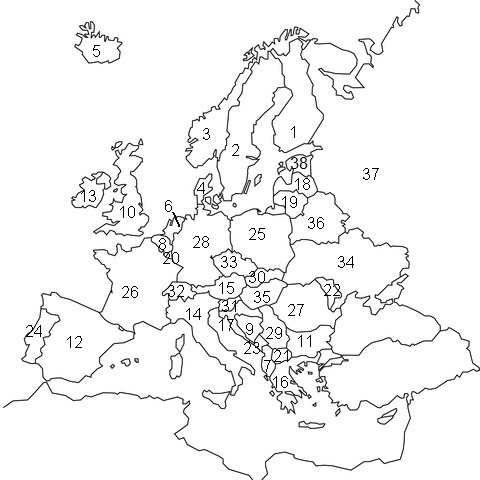9. The map of Europe
Starting level evaluation
What is Europe?
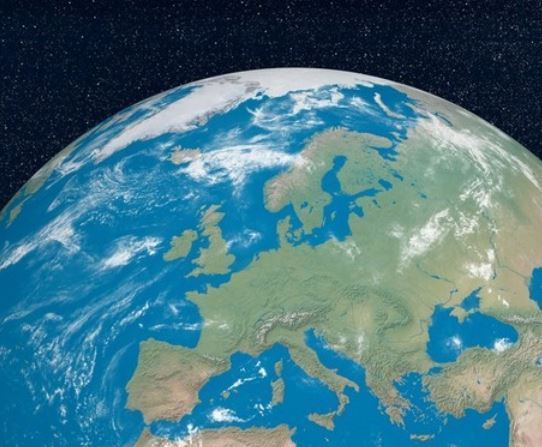 The satellite image on the right shows the location of Europe on planet Earth. Europe is a continent. Its borders are the Atlantic Ocean, the Mediterranean Sea and the Arctic Ocean.
The satellite image on the right shows the location of Europe on planet Earth. Europe is a continent. Its borders are the Atlantic Ocean, the Mediterranean Sea and the Arctic Ocean. Think about the first three things that come to your mind when you think about the word "Europe".
These things can be cities, nations, islands, animals or people.
Write down the three things in the comment field below.
Coordinates
A straight line called the equator runs horizontally through the map of the world. The equator divides the planet into its northern and southern hemispheres. In the northern hemispehere, the day is at its longest during the month of July. In the southern hemisphere, on the other hand, the day is at its longest during the month of december.
The equator and other lines that run through the map of the world parallel to it are called latitudes. Latitudes can be used to describe where a certain place is located on the planet. For example, the latitude of the Finnish capital city, Helsinki, is 60 degrees North (60° N).
There are also vertical lines running through the map of the world. These lines are called longitudes. The line of zero longitude runs through the British capital city, London, and is also known as the Greenwich meridian. On the opposite side of the planet, you can find the longitude of 180 degrees, which is called the Date Line.
The equator and other lines that run through the map of the world parallel to it are called latitudes. Latitudes can be used to describe where a certain place is located on the planet. For example, the latitude of the Finnish capital city, Helsinki, is 60 degrees North (60° N).
There are also vertical lines running through the map of the world. These lines are called longitudes. The line of zero longitude runs through the British capital city, London, and is also known as the Greenwich meridian. On the opposite side of the planet, you can find the longitude of 180 degrees, which is called the Date Line.
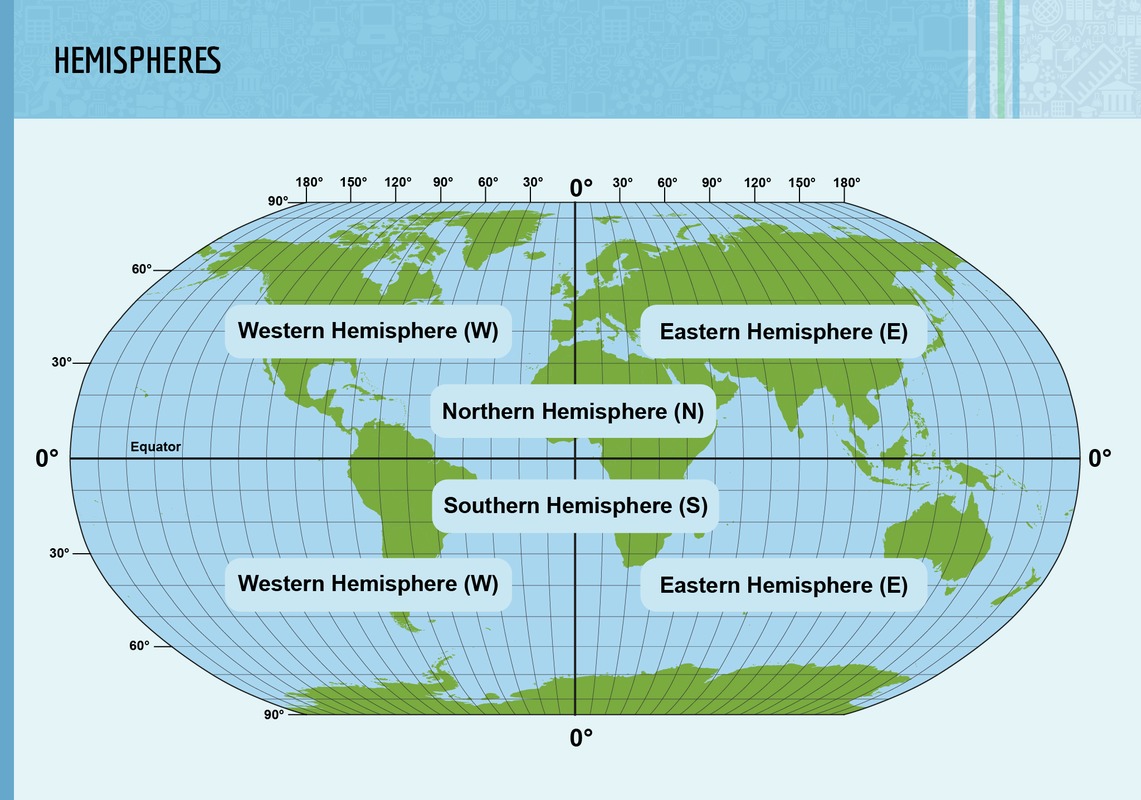
The hemispheres, the equator and the Greenwich meridian.
Like the equator, the Greenwich meridian also divides the planet into two hemispheres. The eastern hemisphere is located to the east of the Greenwich meridian, whereas the western hemisphere is located to the west of it. Together, the lines of latitude and longitude cover the map of the world with a coordinate grid.
The coordinate grid can be used to describe where a certain place is located on the planet. For example, the latitude of Helsinki is 60° N and its longitude is 25° E. In contrast, the longitude of the Brazilian city of Belo Horizonte is 20° S and its longitude is 45° W.
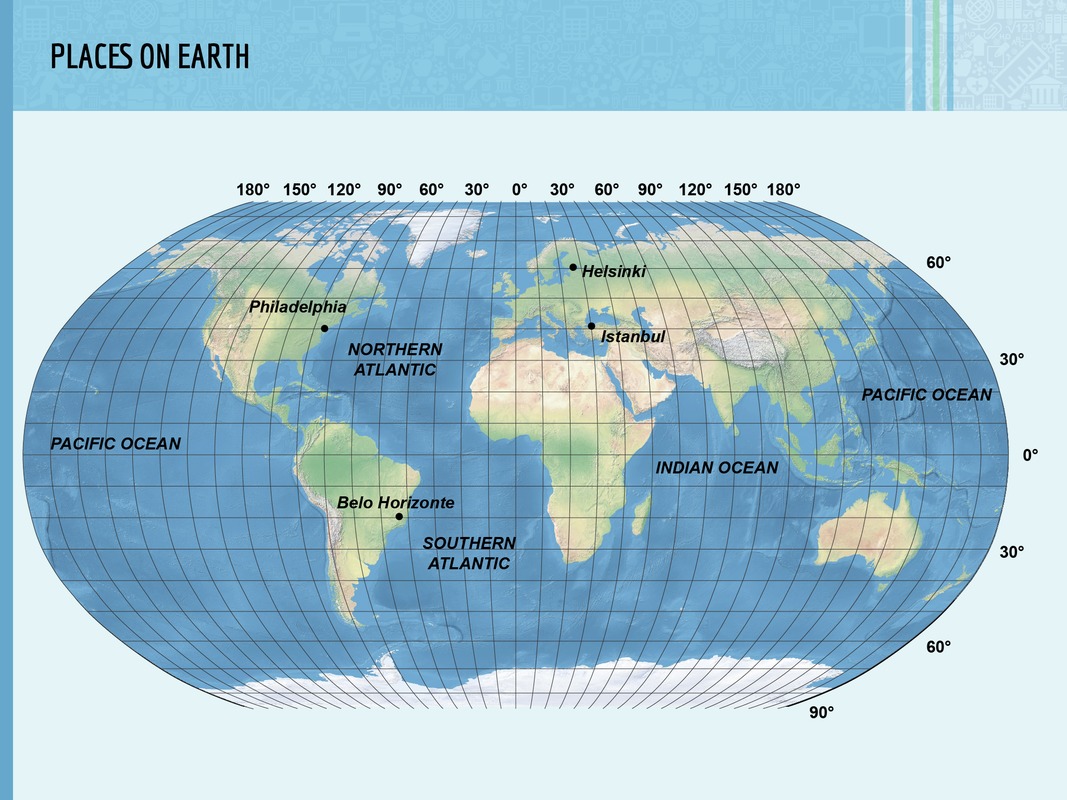
Continents and oceans
- Europe is one of the planet's seven continents.
- The other continents are Asia, Africa, Australia, North America, South America and Antarctica.
- In geological terms, Europe is actually part of the Eurasian continent, together with Asia.
- The borders between Europe and Asia are the Russian Ural and Caucasus Mountains, as well as the Black Sea.
- Europe is bordered to the west by the Atlantic Ocean.
- Europe is separated from Africa by the Mediterranean sea.
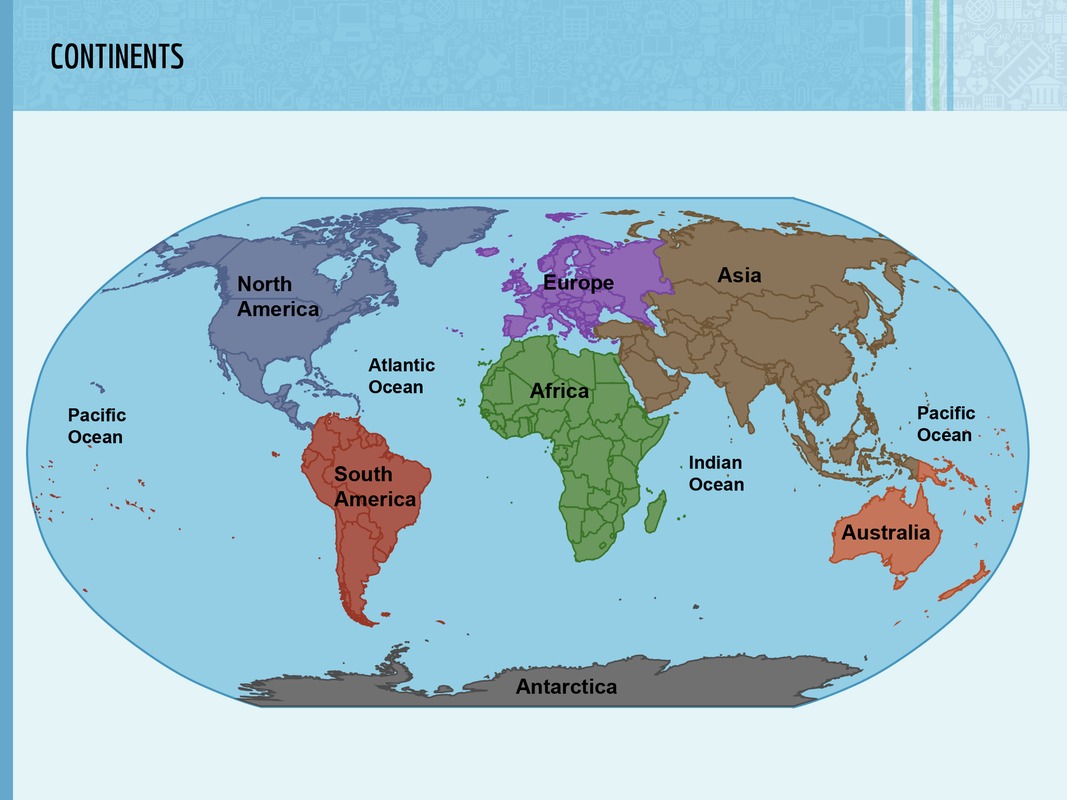
European nations
Europe can be displayed on a map. A national map displays the most important features of an independent nation, such as its most important cities. A topographic map focuses on displaying the geographic features of the region, such as its mountain ranges.
Although Europe is a relatively small continent, it contains a large number of independent nations. During this course, your job is to learn the locations of all the largest and most important European nations.
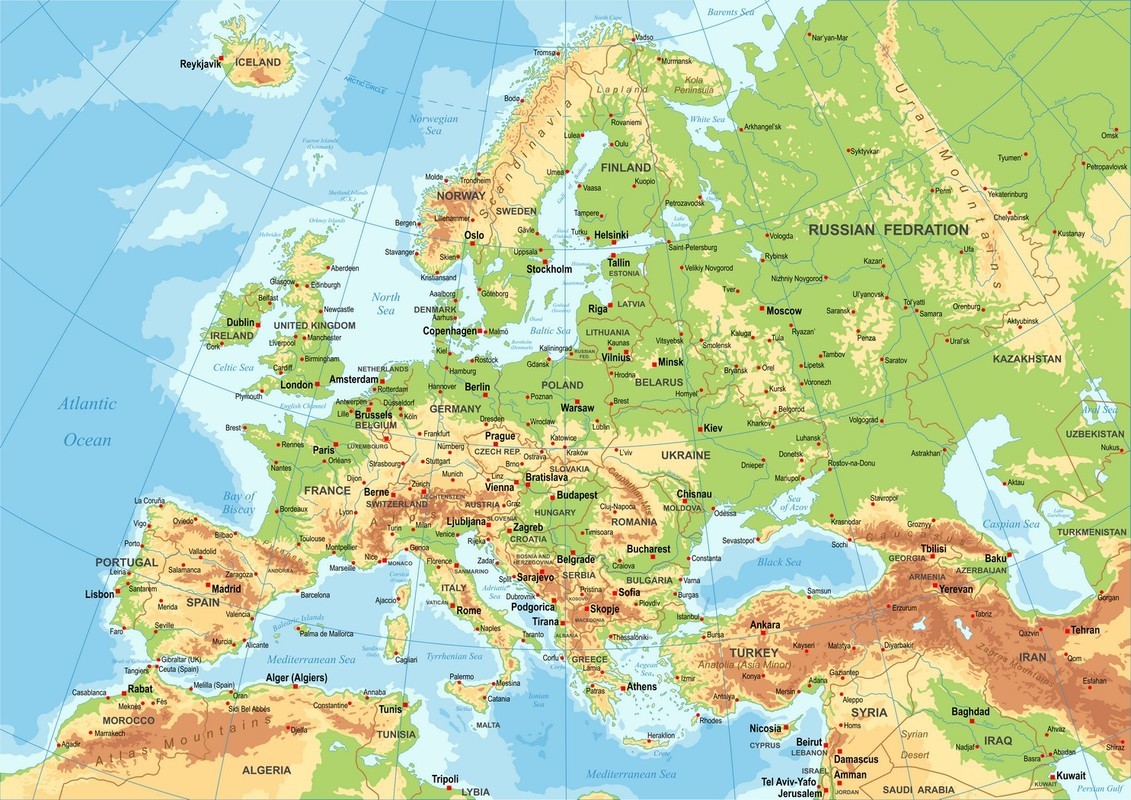
Although Europe is a relatively small continent, it contains a large number of independent nations. During this course, your job is to learn the locations of all the largest and most important European nations.

Finding European nations on the map
The map on the right shows the most important European nations in numbers. Using this map, it is easy for you to practice naming and finding different European nations on the map!
The Nordic countries: 1. Finland, 2. Sweden, 3. Norway, 4. Denmark, 5. Iceland
Other European nations: 6. the Netherlands, 7. Albania, 8. Belgium, 9. Bosnia and Hertsegovina, 10. the United Kindgom, 11. Bulgaria, 12. Spain, 13. Ireland, 14. Italy, 15. Austria, 16. Greece, 17. Croatia, 18. Latvia, 19. Lithuania, 20. Luxemburg, 21. Macedonia, 22. Moldova, 23. Montenegro, 24. Portugal, 25. Poland, 26. France, 27. Romania, 28. Germany, 29. Serbia, 30. Slovakia, 31. Slovenia, 32. Switzerland, 33. the Czech Republic, 34. Ukraine, 35. Hungary, 36. Belarus, 37. Russia, 38. Estonia.
The following small nations are not numbered on the map: Andorra, Liechtenstein, Malta, Monaco, San Marino and the Vatican.
Terminology
| Term | Explanation |
|---|---|
| continent | A large land region of the planet Earth. |
| longitude | A line that runs vertically across the planet, between its South and North poles. |
| latitude | A line that runs horizontally across the planet, parallel to the equator. |

